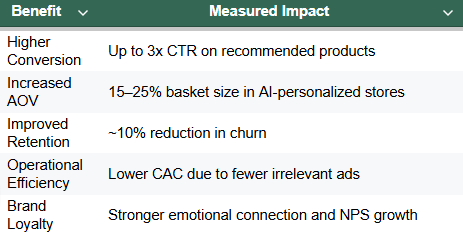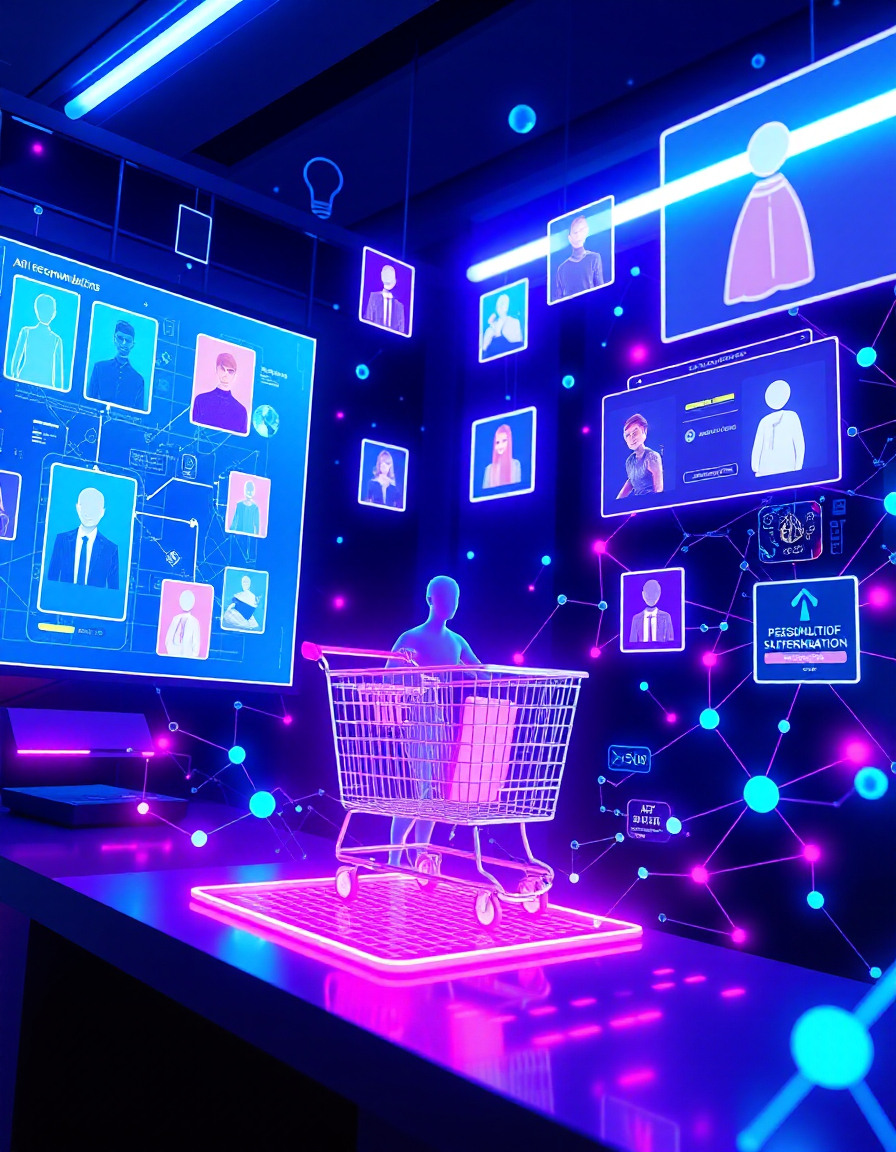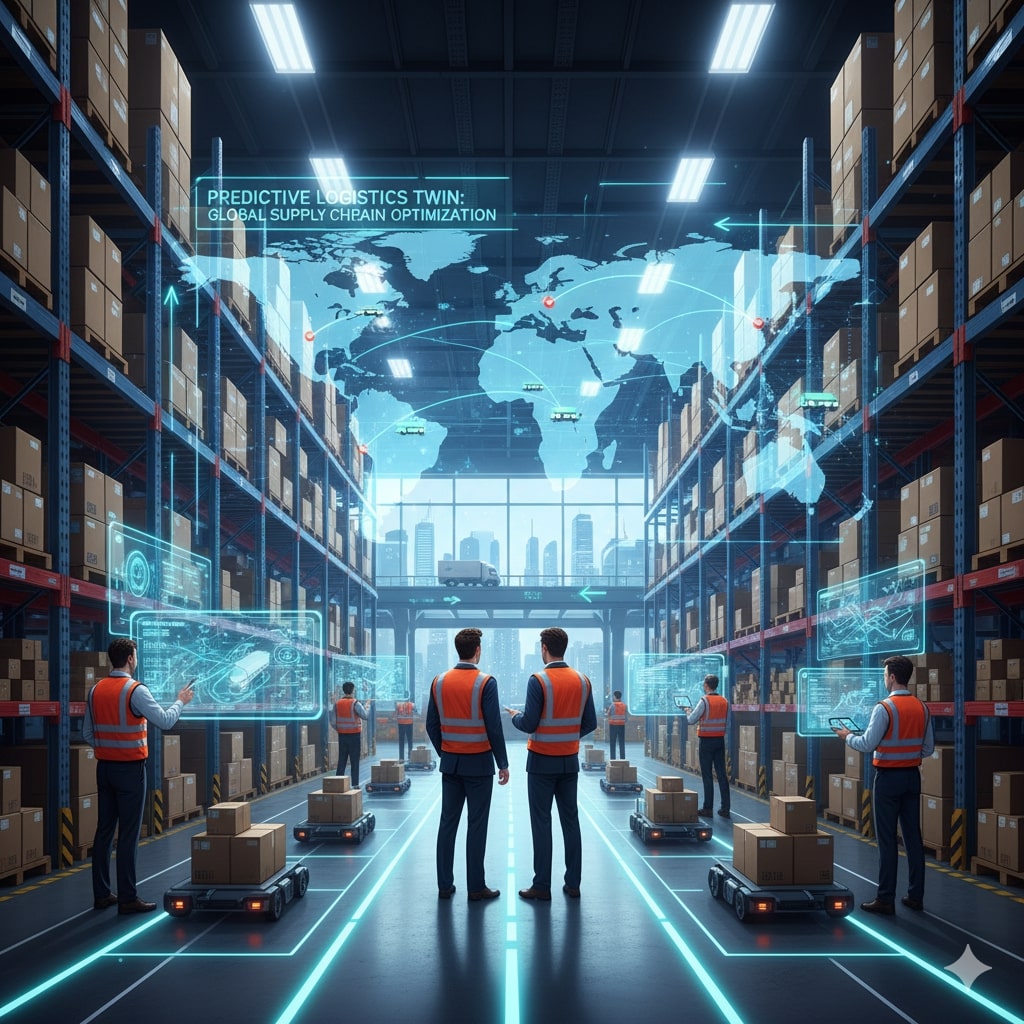Personalization at Scale: AI-Driven Product Recommendations in E-Commerce
Introduction
Consumers want online shopping to be as if it were reading their minds: they want the platform to know their likes, necessities, and their overall situation. The unchanging catalogs give rise to disappointment among buyers, while the customized experiences lead to conversion. McKinsey reports that personalized companies get more than 40% revenue increase from such activities when compared to non-personalized ones.
By the year 2025, the AI-driven suggestions will have undergone a transformation process where the straightforward “people who bought this also bought…” will have turned into the context, emotion, and real-time signals considering deep learning engines:
- Salesforce (2025): Three-quarters of consumers want to be treated in a personalized way no matter what channel they use.
- Adobe Digital Trends (2025): 65% of sellers will turn to AI for more money in recommendation systems by 2026.
- Merchants on Shopify Plus employing AI personalization tools experience a 15-25% increase in average order value (AOV).
- Mass personalization is now recognized as a strategic advantage in the saturated digital marketplace.
1. The Evolution of Recommendation Engines
Recommendation systems have traveled a long distance:
- Rule-Based → Collaborative Filtering: First, the systems were based on correlation of the purchases ("customers who bought X also bought Y").
- Deep Learning & Transformers: A modern deep architecture like BERT4Rec marks the beginning of the customer journey modeling by capturing browsing, abandonment, and revisiting behaviors.
2. Core AI Techniques in 2025
E-commerce platforms today have adopted a combination of algorithms that are too integrated to be called one-size-fits-all systems. The main techniques are:
- Contextual Bandits: In the selection, you can think of strategy as related to selecting between exploration, new items, and exploitation, proven bestsellers at the same time.
- Graph Neural Networks (GNNs): Discover links between users and products in predefined graphs.
- Generative AI: Employ large language models to generate customized copy for product pages and email.
- Real-Time Behavioral Signals: Analyse clicks, dwell time, and bounce patterns at the very moment.
- Multi-Objective Optimization: Contrive ways to balance conversions and long-term metrics such as CLV and retention at the same outburst.
3. Real-World Examples
In the sphere of personalization research and development, Amazon allocates an amount exceeding $1 billion yearly, and 35% of its total sales are attributed to suggestions.
Similar to this, Stitch Fix combines human touch and AI to create curated "style boxes" through deep learning technology.
In 2024, Shopify's AI Sidekick was launched to automatically create bundles and promotions depending on customer activity.
Reinforcement learning is utilized by Alibaba to customize product feeds for the millions of daily users.
4. Benefits of Personalization at Scale
5. Challenges & Risks
Indeed, personalization can deliver significant ROI, but, in the meantime, it brings along technical and ethical challenges:
- Data Privacy & Compliance: Transparency and consent are compulsory with GDPR, CCPA, and the EU AI Act.
- Filter Bubbles: Hyper-personalization endangers restricting the audience; the systems should proactively add new.
- Cold Start Problem: New users or products have no data—hybrid recommenders assist in closing the gap.
- Scalability & Cost: The process of training large transformer models for millions of SKUs is both costly and an intensive use of resources.
6. Implementation Roadmap for 2025
To succeed, e-commerce companies should follow a three-phase roadmap:
1. Foundation (0–3 Months)
- Audit customer data (POS, CRM, web, app).
- Ensure privacy compliance and consent tracking.
- Launch a baseline collaborative filtering model.
2. Intelligence Layer (3–9 Months)
- Integrate contextual bandits for smart promotions.
- Use GNNs for richer user–product connections.
- Deploy LLMs for personalized content and email generation.
3. Full Scale (9–18 Months)
- Enable real-time streaming recommendation engines.
- Launch generative AI assistants for personalized shopping.
- Track KPIs: AOV, retention, diversity of recommendations.
7. Future Outlook
Personalization is moving into the realm of the non digital world:
Voice assistants will give real-time suggestions, AR will facilitate virtual fittings, and eco-friendliness markers will make the purchases correspond with individual morals.
Personalization will, by 2027, metamorphose into predictive commerce—foreseeing the next requirements of customers according to their lifestyle, emotions, and purpose.
Conclusion
Custom made as per customer preference at large is the driving force behind the expansion of online shopping in 2025. The leading companies will fuse AI breakthrough and privacy as a priority and real human empathy. Giving out the preferences is no longer the topic, but it is being trusted by and through being relevant.
Key Takeaways
- AI personalization drives up to +40% more revenue compared to non-personalized eCommerce.
- Modern recommendation engines use deep learning, GNNs, and contextual bandits for real-time relevance.
- Generative AI now creates product copy and promotions tailored to each user’s behavior.
- Brands like Amazon, Shopify, and Alibaba already use AI-driven recommendations to scale engagement.
- Challenges include data privacy (GDPR, AI Act), filter bubbles, and high model training costs.
- By 2027, personalization will evolve into predictive commerce — anticipating customer needs before they arise.









